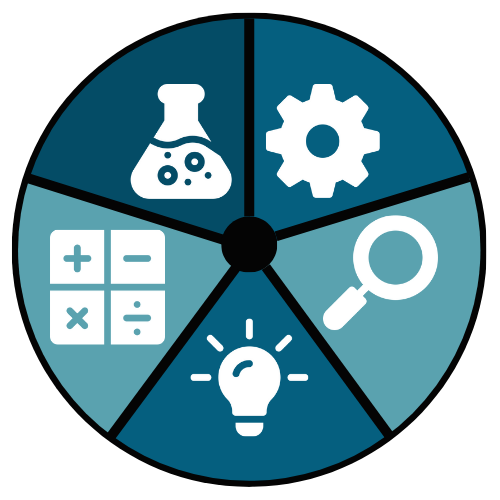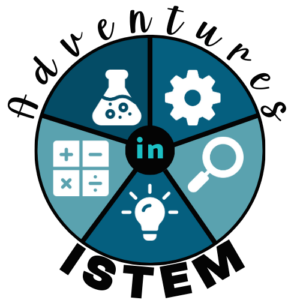One way to help students understand the steps of the scientific method is through using science stations. I like to use the blended learning science rotation model that offers three different stations; group station, online station, and a teacher-led station.

Teaching the Steps of the Scientific Method Step 1: Setting Up Your Science Stations
Design each station to last from 10 to 30 minutes, depending on the complexity of the task. Adjusting the time and activities to suit middle school and ESL students ensures that each station effectively imparts knowledge of the scientific method through practical engagement. I find that in the beginning it is best to take three days for this, one day for each station. This allows me to walk through the expectation for each station and students can take time adjusting to this type of learning.

Choosing the type of activities students will do at each station is important. The group station should be something that students can manage on their own with simple directions. This also goes for the online stations. This is because you will not be able to offer students much support while they are at those stations. The teacher-led station is where you can either challenge the students with a more complex task since you are there to guide and support them.
Teaching the Steps of the Scientific Method Step 2: Group Station
For this station I like to have them work with a pendulum. This station starts with an “I Wonder” phase, encouraging students to explore and pose their own questions.
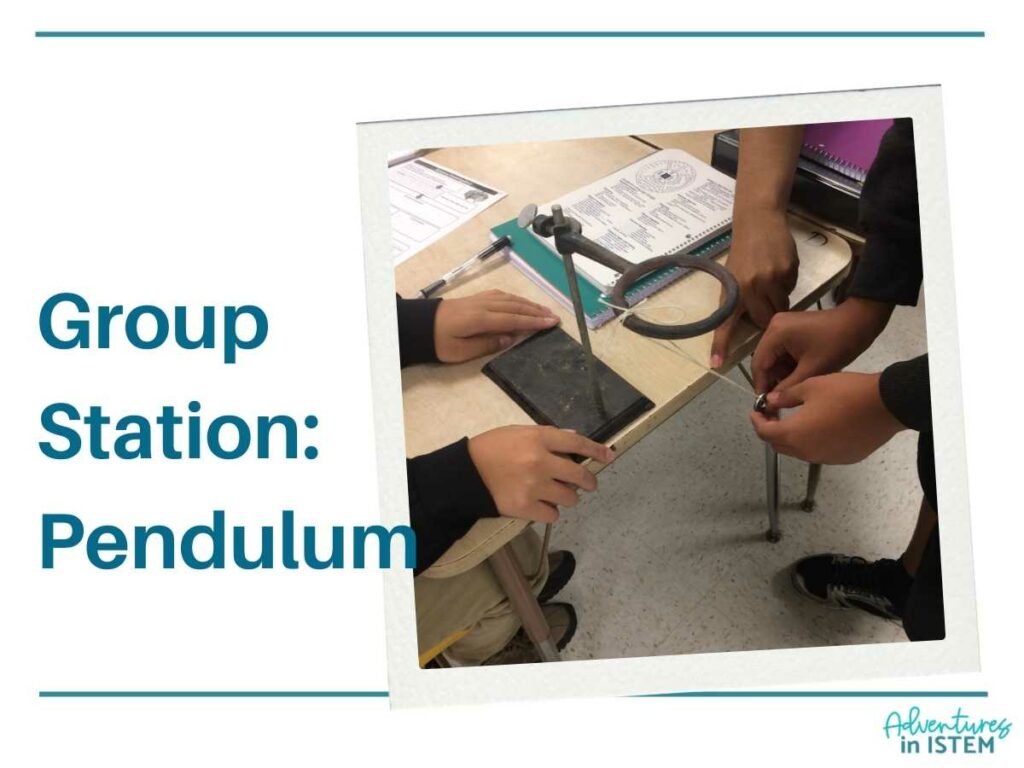
In the “I wonder” phase, the station invites students to brainstorm and voice their curiosities about the pendulum’s behavior. They might ask, “What happens if we change the length of the pendulum?” or “Does the pendulum’s weight affect how many times it swings?” This discussion fosters a collaborative environment where each student contributes ideas, setting the stage for a group-driven investigation.
If you have students that struggle with creating questions you can offer them a few choices that they can then use to make their investigation.
Next, students work together to formulate hypotheses based on their questions. They predict outcomes and define what they believe will influence the pendulum’s swing. This collaborative effort helps students learn to support their ideas with reasoning, preparing them for the experimental phase.
The group then designs an experiment to test their hypotheses. They decide on variables such as the length of the string or the pendulum’s weight. Each group member plays a role in setting up the experiment, conducting it, and collecting data. This hands-on activity is not just about observing; it’s about actively engaging with the scientific process.
Students observe the pendulum’s motion as the experiment unfolds and document their findings. They record the number of swings, the time it takes, and any other observations that relate to their initial questions and hypotheses. This documentation is critical as it forms the basis for their analysis.
After collecting data, the group analyzes its results to see if the evidence supports its hypotheses. It discusses its findings, concluding the relationship between the variables it tested. Finally, the students prepare to share their results with the class, crafting a presentation that showcases its method, findings, and conclusions.
This station teaches students about the scientific method and emphasizes teamwork and communication. Students must work together to complete each step of the process successfully.
Teaching the Steps of the Scientific Method Step 3: Online Station
The Online Interactive Station leverages technology to enhance learning. It allows students to explore and apply the steps of the scientific method through engaging digital simulations and resources. This station can be navigated individually or in pairs, fostering both independent and collaborative learning.
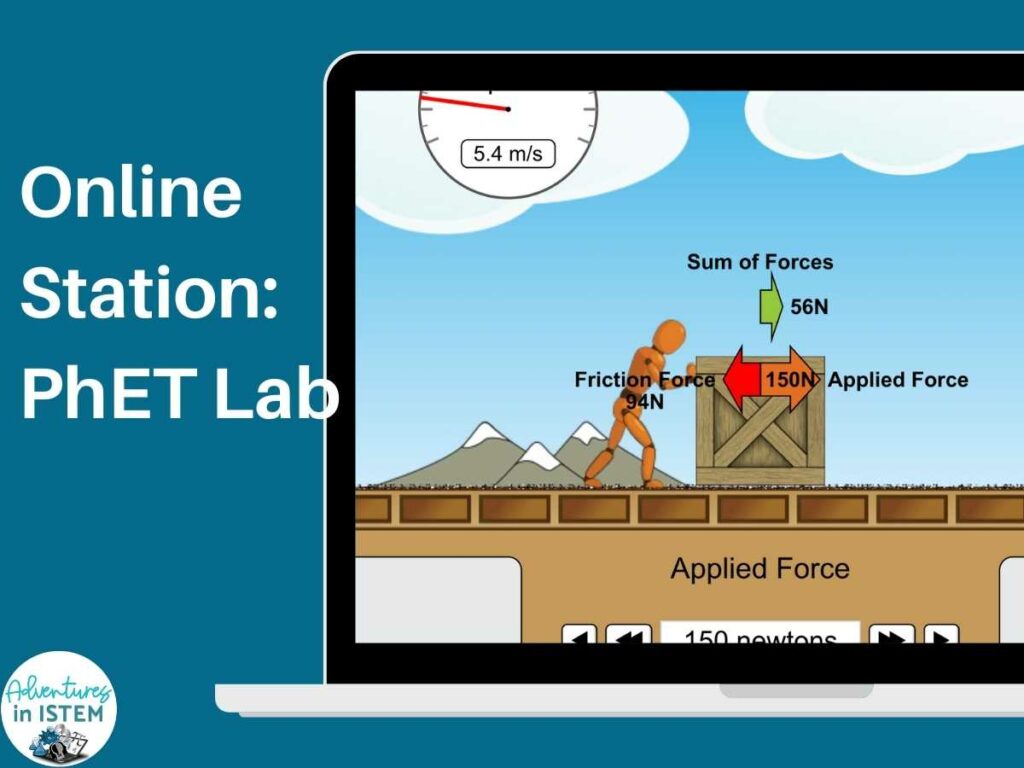
Introduce students to simulations like PhET simulations or explore learnings simulations, which provides easy to manipulate variables with simple outcomes. These simulations allow students to manipulate variables and observe outcomes in real time, making abstract concepts more tangible. By experimenting with factors like gravity, mass, and friction, students can see the direct effects of their changes, which helps formulate hypotheses and predict results. For the scientific method I like using PhET’s force and motion basics.
Create simple, guided instructions that students can follow to complete online labs. These instructions should encourage students to hypothesize, experiment, and observe outcomes. I like to provide screen shots of what it might look like. I also provide them a digital notebook for them to record their observations.
After conducting experiments using the simulations, students should use their digital notebooks to analyze the data collected. They’ll compare their initial hypotheses against the observed results and discuss their findings. This analysis is vital for developing critical thinking skills as students evaluate whether the data supports or refutes their predictions.
This station enriches students’ understanding of the scientific method through interactive and self-guided learning and cultivates skills in data interpretation. Students gain a deeper appreciation and understanding of scientific inquiry by engaging with the content actively and independently or with a partner.
Teaching the Steps of the Scientific Method Step 4: Teacher-Led Station
The Teacher-Led Instruction Station is a critical element in the rotation model, offering a more personalized and focused educational experience.For this station I like to take them through the process of identifying the different steps of the scientific method using an already performed experiment. This is my favorite part of science stations. Its one of the few times I feel like I’m really meeting my students needs because it is small group instruction and they get my full attention.
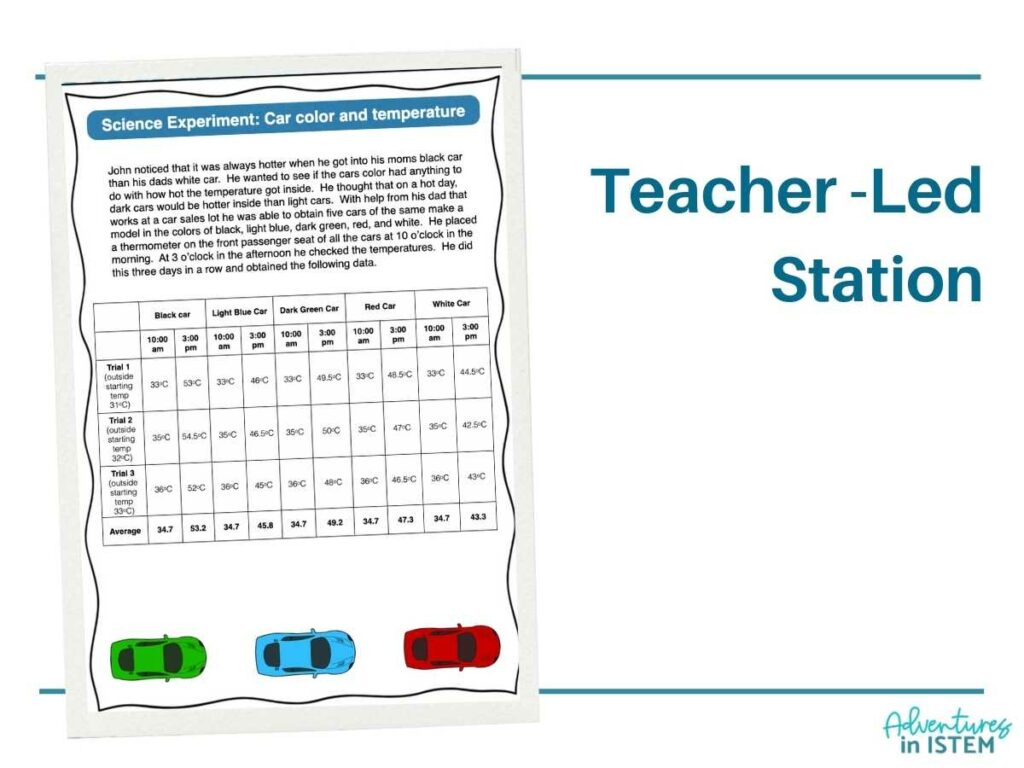
Begin the session by having students read a detailed description of a completed experiment. This experiment serves as a case study for identifying and understanding each step of the scientific method. The teacher guides the discussion, ensuring students recognize the experiment’s question, hypothesis, and materials.
Instruct students to identify the experiment’s independent, dependent, and controlled variables. This step is crucial as it helps clarify the setup and design of the experiment. Following this, engage students in analyzing the collected data. Discuss patterns noticed and predictions that could have been made, fostering a deeper understanding of how hypotheses are tested.
Encourage students to write a claim based on the experiment’s hypothesis, stating whether the data supported or refuted it. They should use specific evidence from the experiment’s data to bolster their claim. This practice reinforces their understanding of evidence-based reasoning and enhances their analytical skills.
Finally, guide students in writing a reasoning statement, linking their claim and the evidence with scientific principles they already know, such as concepts related to the study’s topic. Help them combine their claim, evidence, and reasoning into a cohesive conclusion paragraph. This synthesis not only wraps up the session’s learning outcomes but also teaches students how to construct well-rounded scientific arguments.
This station is your opportunity to tailor instruction to meet the diverse needs of your students. You can modify the lesson’s complexity based on the group’s abilities, offering more challenging materials for advanced learners or additional support for those who need it. This personalized approach ensures that all students can effectively engage with and benefit from the session.
Teaching the Steps of the Scientific Method Step 5: Grouping Strategies and Assessment Methods
How groups are formed and assessed can significantly influence the success of the science stations. How you group your students and how you grade them will depend on the purpose of the science station and when it occurs during your 5E lesson of the scientific method.
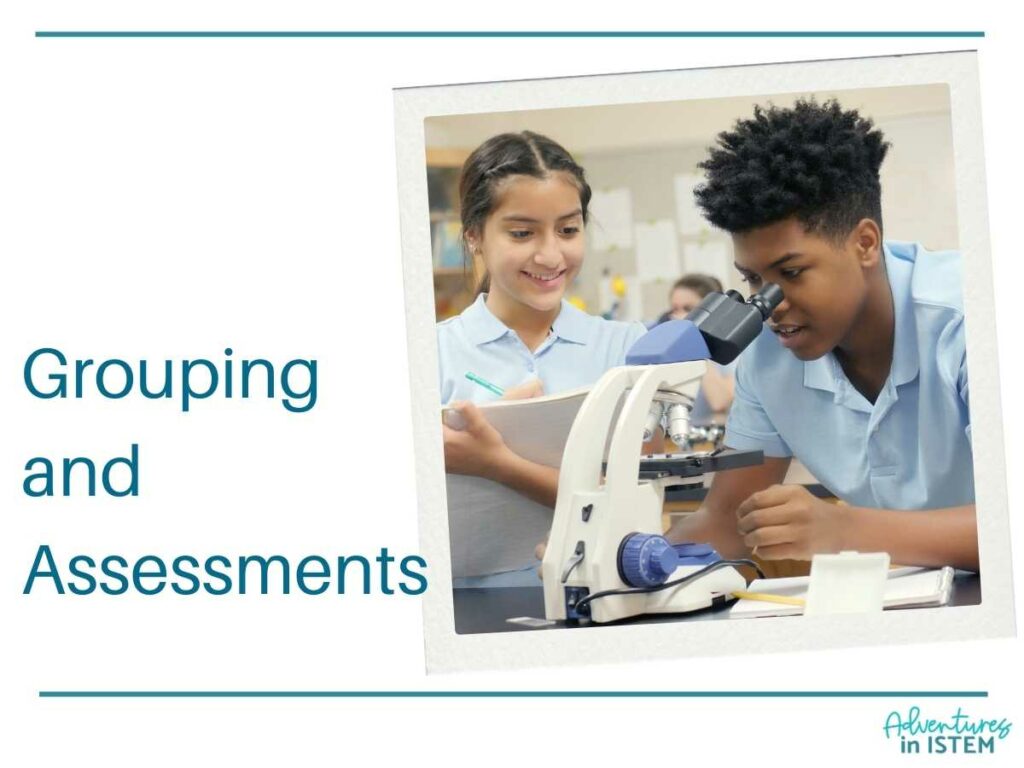
Depending on the purpose of the science station, you might want to put the students into heterogeneous groups where there is a mix of abilities or homogenous groups where students with similar abilities and grouped together. If it is done at the beginning of a unit where they are still learning the information or during the exploration phase, then you might want to group them heterogeneously so they can help each other out. If it is done as a review after they have read about the steps of the scientific method or taken notes on them, during the elaboration phase, then you might want to group them homogeneously so that you can challenge the more advanced students and reteach the struggling students.
Grading will also depend on when the students are doing the stations and the purpose. If it is done at the beginning of the unit as an inquiry investigation, I suggest you just give them a work habit grade or make it worth very little. This will allow them to take academic risks without being penalized for not knowing the information. If this is done at the end of a unit to elaborate, then you could offer a rubric score and grade their ability to apply their knowledge of the topic.
By focusing on effort and collaboration rather than just correctness, you encourage a learning atmosphere where students feel safe to experiment and learn from their mistakes. This approach reduces pressure and fosters a more exploratory and interactive learning environment. It also holds students accountable daily, reinforcing the importance of consistent effort and active participation.
These grouping and assessment strategies ensure that science stations are not just about learning scientific concepts but are also about developing essential life skills like teamwork, responsibility, and critical thinking. This holistic approach to teaching and assessment helps cultivate a classroom culture that values continuous learning and mutual respect.
Teaching the steps of the scientific method through science stations is a great way to engage students in scientific inquiry. It allows students to learn or review the steps of the scientific method through different modalities, meeting more of your student’s needs.
You might also wanted to check out how to do blended learning in the science classroom.
